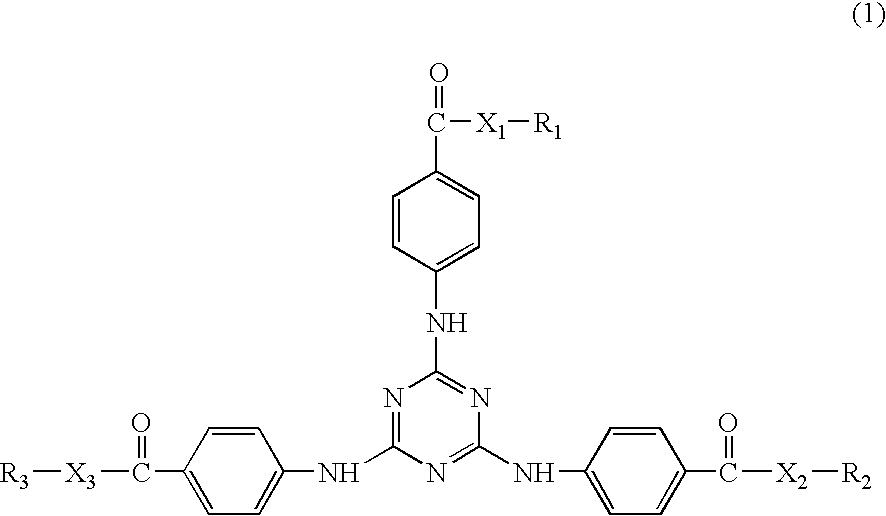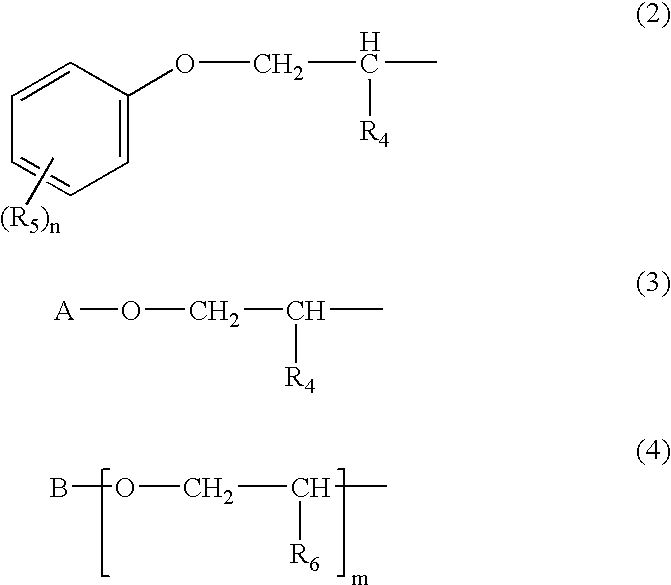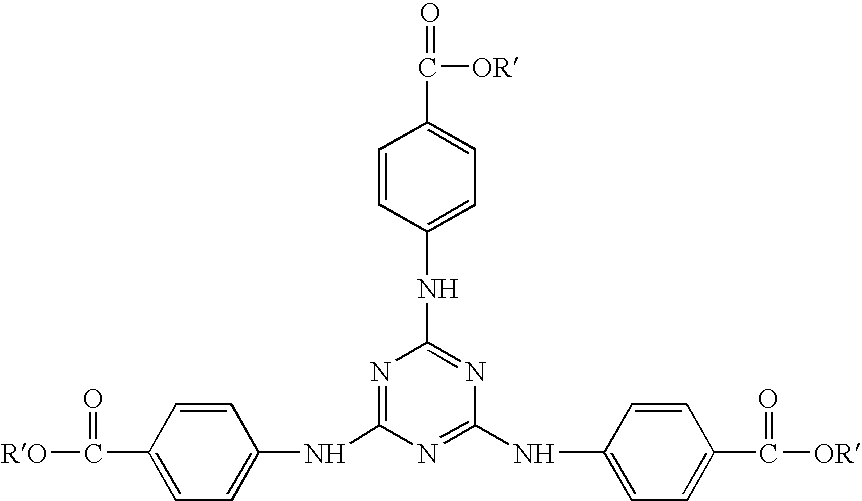Dibenzoylmethane sunscreen compositions photostabilized with amphiphilic block copolymers
a technology of amphiphilic block and dibenzoylmethane, which is applied in the field of photostabilization of photosensitive sunscreens towards uv radiation of screening systems, can solve the problems of not being able to ensure constant protection, not being able to solve the problem of completely satisfactorily, and not being able to photostabilize photosensitive sunscreens towards uv radiation
- Summary
- Abstract
- Description
- Claims
- Application Information
AI Technical Summary
Benefits of technology
Problems solved by technology
Method used
Image
Examples
example 1
[0182]The mixture below was formulated:
[0183]
Polystyrene / polyoxyethylene block copolymer sold under1.20 gthe name Tegomer SE-1010 (company Goldschmidt, Polym)Parsol ® 17890.22 g
[0184]The Parsol® 1789 was dispersed in the Tegomer SE-1010 with heating at 40° C. for 60 minutes. The mixture was allowed to cool to room temperature. The oily mixture was ready for use.
[0185]The oily mixture was evaluated in the form of a thin coat of about 10 microns deposited on a glass plate (microscope slide), in the presence of oxygen.
[0186]An irradiation was then performed, using an Ostram-Centra Uvimeter equipped with a xenon lamp, under the following conditions:[0187]Energy of the UV-A lamp: 22 J / cm2 [0188]Irradiation time of the simulator=20 minutes
[0189]These conditions correspond to about one hour of solar UV-A sunshine.
[0190]The photodegradation was monitored by absorption spectrophotometry. The following results were obtained:[0191]1) The mixture was able to form a film and the quality of the f...
example 2
[0194]The mixture below was formulated:
[0195]A block copolymer was dissolved in dichloromethane with excess Parsol® 1789. The solvent was evaporated off under reduced pressure using a rotary evaporator. The film formed was then hydrated with distilled water, with stirring, at a temperature between 20 and 80° C., for two hours. The amount of polymer in the water was about one percent.
[0196]24 hours later, this suspension was centrifuged in order to separate out the Parsol® 1789 that had not been encapsulated in the polymer micelles. The supernatant, which should not contain identifiable crystals under an optical microscope in polarized light, was taken up and then assayed by HPLC.
[0197]The supernatant was then irradiated under UV for one hour, the UV-A intensity being 3.2 mW / cm2 and the UV-B intensity being 0.22 mW / cm2, i.e., 11.5 J / cm2 and 0.79 J / cm2, respectively, in a 96-well plate, at a rate of 100 μl of suspension per well. A quartz plate was placed on top in order to limit the ...
example 3
Compositions tested:
[0204]
Composition AComposition BComposition CTegomer SE 10103Tegomer SE30303Parsol 1789111C12 / C15 alkylbenzoate111111Crosslinked acrylic0.150.150.15acid / (C10 / C30)alkylacrylate copolymerHydroxypropylmethyl-0.050.050.05celluloseTriethanolamine0.150.150.15Water qs505050
PUM
| Property | Measurement | Unit |
|---|---|---|
| mean particle size | aaaaa | aaaaa |
| mean size | aaaaa | aaaaa |
| mean size | aaaaa | aaaaa |
Abstract
Description
Claims
Application Information
 Login to View More
Login to View More - R&D
- Intellectual Property
- Life Sciences
- Materials
- Tech Scout
- Unparalleled Data Quality
- Higher Quality Content
- 60% Fewer Hallucinations
Browse by: Latest US Patents, China's latest patents, Technical Efficacy Thesaurus, Application Domain, Technology Topic, Popular Technical Reports.
© 2025 PatSnap. All rights reserved.Legal|Privacy policy|Modern Slavery Act Transparency Statement|Sitemap|About US| Contact US: help@patsnap.com



